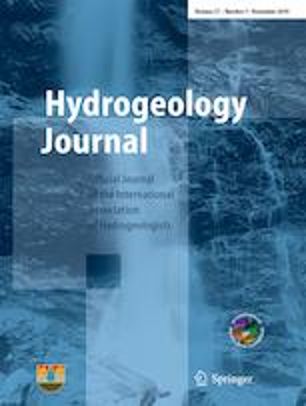| Title: | Evidence for groundwater mixing at Freeling Spring Group, South Australia |
| Authors: |
|
| Abstract: |
Water sampling at springs that are a part of the Freeling Spring Group, South Australia, was used along with electrical resistivity imaging (ERI) data to evaluate the sources and pathways for groundwater to the springs and to find evidence of mixing between the Great Artesian Basin (GAB) aquifer system (Algebuckina Sandstone, Cadna-owie Formation and lateral equivalents) and waters from the adjacent mountain block basement (MB) aquifer. Five springs and a well were used to evaluate spring chemistry; multi-electrode resistivity data were collected along three orientations over the Freeling Spring site. The resistivity data indicate three independent electrically conductive curvilinear features connected to the spring. These features are evidence of mixing at the spring vent similar to what would be predicted from traditional hydraulic flownets. The chemistry of the spring water samples indicates that the water emanating from the Freeling Spring Group is a mixture of waters from both the GAB and the MB aquifers, supporting the geophysical evidence. The data suggest mixing occurs along a fracture in the body of the MB and porous media flow in the GAB beds, but the system is dominated by the GAB flow, which provides approximately 90% of the discharge. |
| Citation: | Halihan T, Love A, Keppel M, Dailey M, Berens V, Wohling D (2020), Evidence for groundwater mixing at Freeling Spring Group, South Australia, Hydrogeology Journal, vol 28 (1), pp 313-323. https://doi.org/10.1007/s10040-019-02069-x |
| Keywords: | Australia, Fractured rocks, Geophysical methods, Groundwater mixing, Electrical resistivity imaging |


